
 What CAN be composted in the green lidded food and garden organics (FOGO) bin?
What CAN be composted in the green lidded food and garden organics (FOGO) bin?
 | ALL food scraps (including dairy, meat, bones, seafood, fruit and vegetable scraps) |
 | Lawn clippings |
| Small cuttings, prunings and branches (up to 15cm wide x 60cm long) | |
 | Weeds |
 | Cut flowers |
 | Sawdust |
 | Tissues & paper towel |
 | Hair and nail clippings |
 | Egg cartons |
 | Egg & oyster shells |
 | Coffee grounds |
 | Tea leaves & tea bags |
 | Pet waste (please place in a compostable bag or newspaper) |
 | Pizza boxes, compostable paper and cardboard food packaging |
 | Compostable cups and cutlery |
 | Compostable kitchen caddy liners (as supplied by council) |
 | Shredded paper, post-it notes and small peices of paper |
 | Newspaper |

*Please note compostable bags/liners, food packaging, cups and cutlery need to be certified as 100% compostable, look for the seedling logo (AS 4736) and/or the home compost logo (AS 5810). Both are accepted in the green FOGO bin.
Through the recent single use plastic bans, many takeaway food and drink packaging items have now transitioned to certified compostable alternatives. Look for the certification symbols. If certified they can go in your green organics bin. More information on the single use plastics bans can be found on the Replace the Waste website.
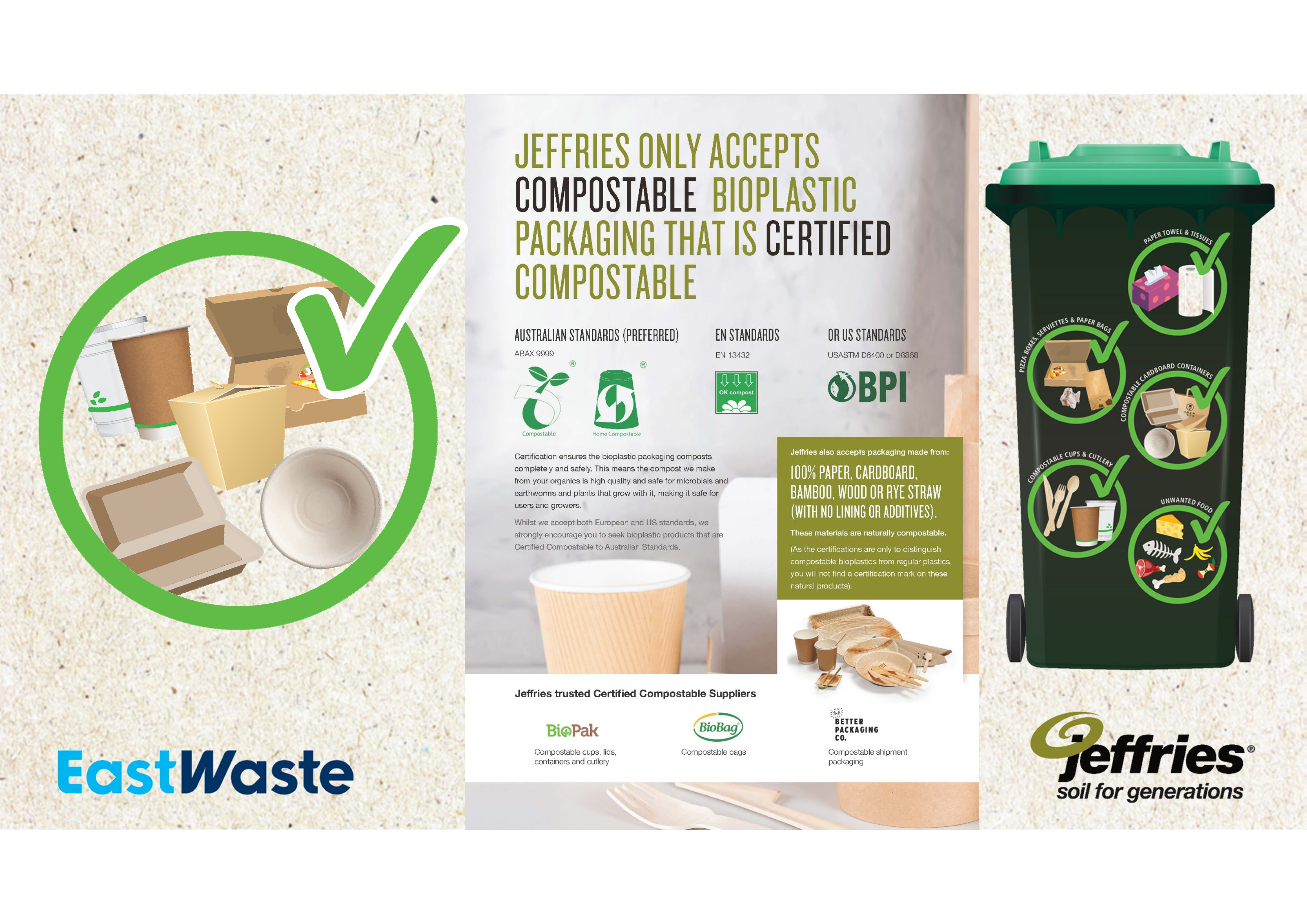
 What CANNOT be composted in the Green food and garden organics (FOGO) bin?
What CANNOT be composted in the Green food and garden organics (FOGO) bin?
If it didn’t grow, it doesn’t go- that’s the rule for the food and garden organics bin.
 | Plastic bags and other soft plastics. | |
 | Plastic packaged food, please ensure food is free of any packaging. | |
 | Textiles; clothing, footwear and bedding | |
 | Building material, dirt or rocks |
Green Bin tips
Additional items that can and cannot go in FOGO!
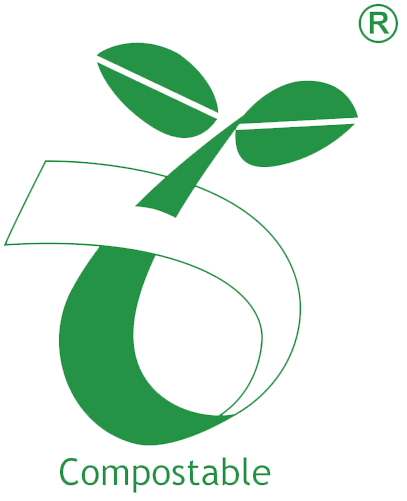 | No logo = No FOGO! Only certified compostable bioplastics are allowed in the green bin! Look for the seedling logo. |
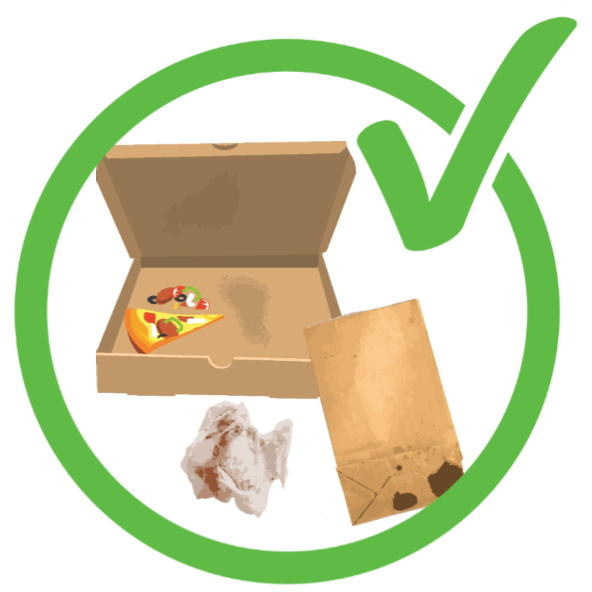 | Greasy Pizza boxes with food scraps can go in the FOGO bin. |
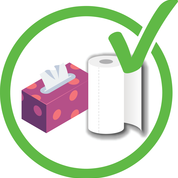 | Shredded paper, tissues and paper towels, brown paper bags and toilet rolls can go in the FOGO bin. |
 | All food is good to go in the green lidded FOGO bin. |
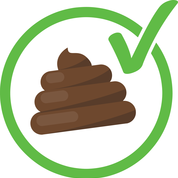 | Pet waste can be composted in your green lidded FOGO bin. |
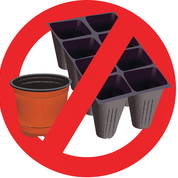 | Please keep plastic pots and trays out of the green lidded FOGO bin. Empty plastic plant pots and seedling trays can be placed in the yellow lidded recycling bin. Make sure they are free of soil first. |
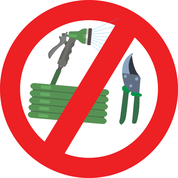 | No Garden hoses, irrigation pipe or garden tools. |
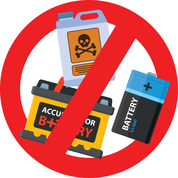 | No batteries or hazardous chemicals please in your recycling or FOGO bin. |
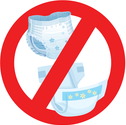 | No Nappies! Please place all disposable nappies in the general waste/waste to landfill bin, even those claiming to be compostable or biodegradable. At present there isn’t any brand of nappy that is certified compostable as they still have plastic components that do not break down. |
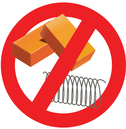 | Bricks, building materials and wire are other items we don’t desire, in the recycling or FOGO bin! |
Keep your green bin smelling sweet…even in the heat!
- Line your bin. Line your bin to stop food sticking to the bottom of the bin. Use newspaper, shredded paper, cardboard (remove any plastic packaging tape first), pizza boxes, egg cartons, dry leaves, or garden clippings before you place food scraps in.
- Layer it – like a lasagne! Alternate layers of lawn clippings, leaves, shredded paper and newspaper between the food scraps to reduce odours and moisture.
- Leave the lid open. On warm sunny days, open the lid of your green bin to allow for aeration and drying of material.
- Put your green bin out for collection every fortnight, even if it isn’t full.
- Keep your green bin in the shade.
- Don’t overfill your bin, make sure the lid is closed properly.
- Wash your bin out from time to time using a high pressure hose and mild detergent.
How to detract insects and rodents
Overripe, rotting or decayed fruit and vegetables can attract small vinegar flies and other insects to your kitchen caddy and green bin. In addition to the above, the following tips can further prevent insects and rodents from becoming a problem:
- Eat ripened fruit and vegetables promptly or put them in the fridge until you can use them.
- Clean up any spills or mess around your caddy or green waste bin.
- Wrap rotten food in newspaper or paper towel and put it straight into your green bin or freeze in a separate container and put in your green bin the night before collection.
- Spray lavender or mint oil around the base of your kitchen caddy and green bin. This will help to deter vinegar flies in your kitchen caddy as well as flies, rats and mice around your green bin.
Kitchen Caddy
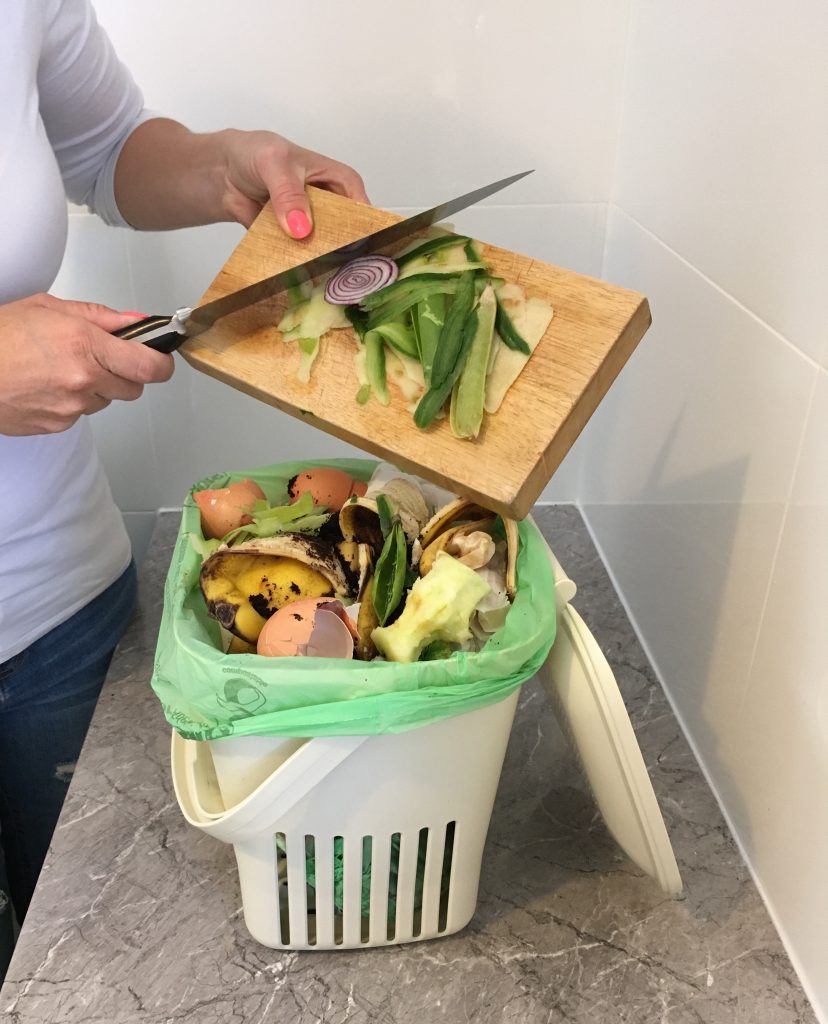
Use a kitchen caddy system to collect food scraps and other compostable materials before placing them into your green lidded food and garden organics bin
Kitchen Caddies and compostable bags are available from all East Waste Member Councils: Adelaide Hills, City of Burnside, Campbelltown City Council, City of Mitcham, City of Norwood Payneham St Peters, City of Prospect and Town of Walkerville.
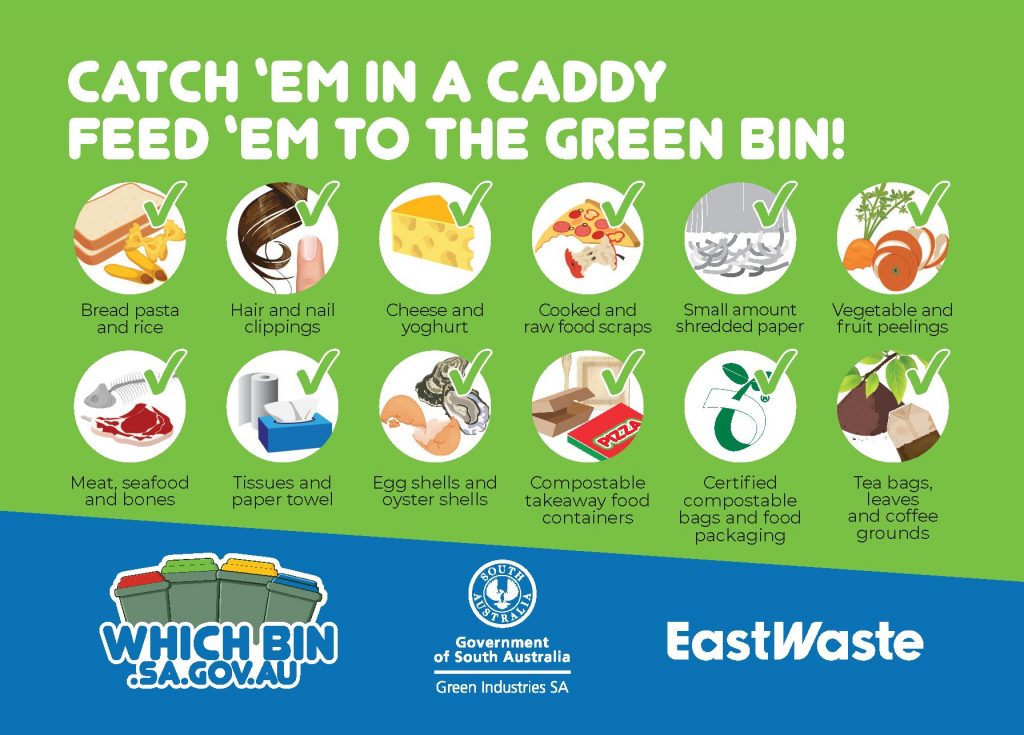
Kitchen Caddy tips
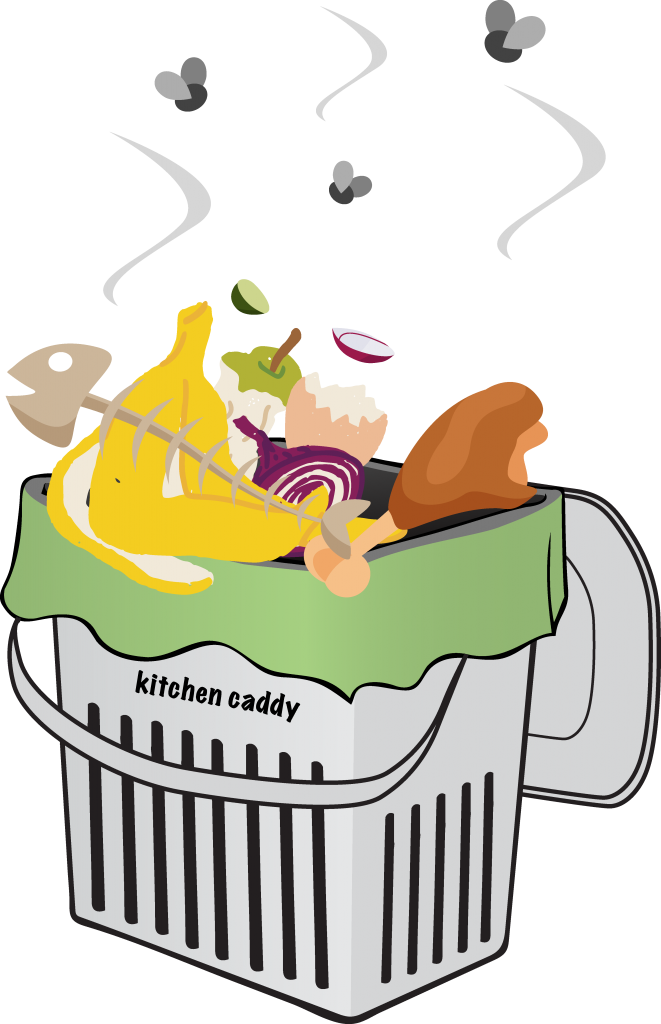
Keep your kitchen caddy and green bin smelling sweet…even in the heat!
- Empty your caddy when full or every 2-3 days and rinse it after each use. Empty it more regularly during warmer weather. For a more thorough clean you can use dish detergent or pop it in your dishwasher.
- Place dry materials such as tissues, paper towel, paper serviettes, shredded paper, toilet paper rolls, brown paper bags and compostable food packaging in the kitchen caddy to soak up odour and moisture.
- Freeze seafood, meat and dairy scraps until your collection day, then place them straight into your green bin the night before your collection.
- Sprinkle bi-carbonate (baking) soda on top of food scraps.
- Use a ventilated caddy lined with a breathable compostable BioBag or open the lid to allow for airflow.
Why is composting food and garden organics important?
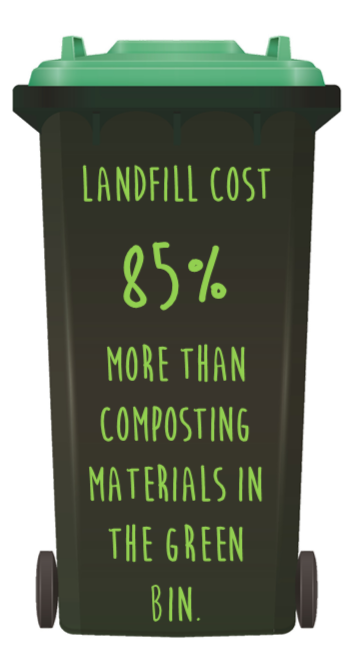
Our recent bin materials audit showed that 38% of materials disposed of in the wasted to landfill bin was food and compostable material. Composting green organics is great for our environment. Most of the greenhouse gas emissions from landfill come from decomposing organic material which could be recycled through the green bin. Not only do green organics produce methane as they decompose, but their nutrients remain locked in landfill and can’t be used again to grow plants and food. Compost can be used in gardens as a soil conditioner and slow release fertiliser. Compost can be used to fertilise gardens, farms and sporting fields and the mulch can be used to protect against weeds, reduce plant stress and save water in gardens, parks, orchards and vineyards. Find out more about using compost and mulch.
Composting and mulching food and garden organics is 85% cheaper than sending them to landfill. If we reduce the amount of material sent to landfill then councils can pass on these savings to residents and invest in other community services.
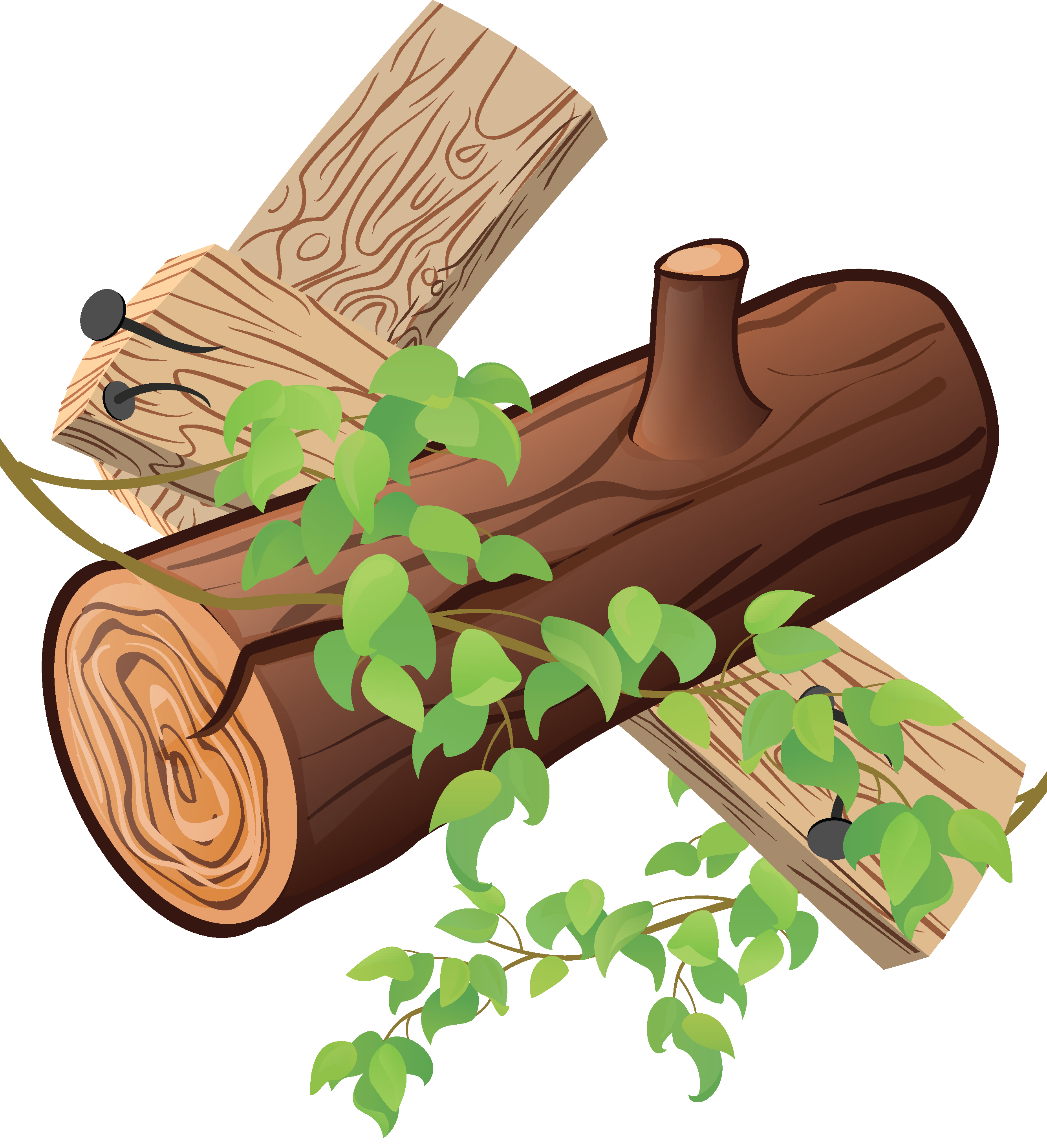 Excess Garden Organics options
Excess Garden Organics options
- Chop up your tree branches and prunnings into small pieces (no larger than 15cm wide x 60cm long) and place them in your green lidded food and garden organics (FOGO) bin.
- Lease an additional green lidded food and garden organics (FOGO) bin from your Council.
- Adelaide Hills Council residents can CLICK HERE to access the additional bin application form.
- City of Burnside residents can CLICK HERE to access the additional bin application form.
- City of Norwood Payneham & St Peters can CLICK HERE to access the additional bin application form.
- City of Prospect residents can CLICK HERE to access the additional bin application form.
- Use a mulcher to mulch your garden materials then use the mulch in your garden.
- Take the material to Adelaide City Council’s Green Waste and Mulch Depot– Corner War Memorial Drive & Bundeys Road- Ph: 8203 7203. Open Tuesday – Friday 7.30am–3pm, Saturday 10am–3.45pm, Charges apply.
The following locations also accept excess garden materials (fees may apply, please contact and check that locations are open):
- Adelaide Hills – Gumeracha, Woodside and Heathfield
- Adelaide Waste and Recycling Centre
- Beverley Recycling and Waste Centre
- Lynton Green Organics Drop-off Facility
- Metro Waste
- NAWMA Edinburgh North Resource Recovery Centre
- Newton Transfer Station (9 Virginia Rd, Newton. ph: 1300 362 362)
- NAWMA Pooraka Resource Recovery Centre
- Wingfield Waste and Recycling Centre – Jeffries
More information on green organics recycling
Create your own Compost or Worm Farm at home
Click here to access the page on home composting and worm farming
References:
| 1. | Zero Waste SA (Green Industries SA) Composting factsheet |
| 2. | www.jeffries.com.au/what-happens-to-your-green-organics |
| 3. | www.jeffries.com.au/closing-the-loop |
